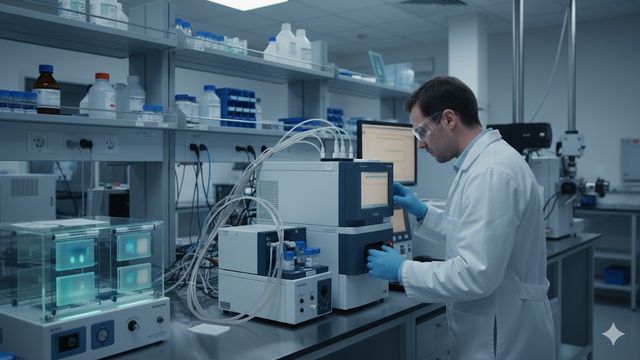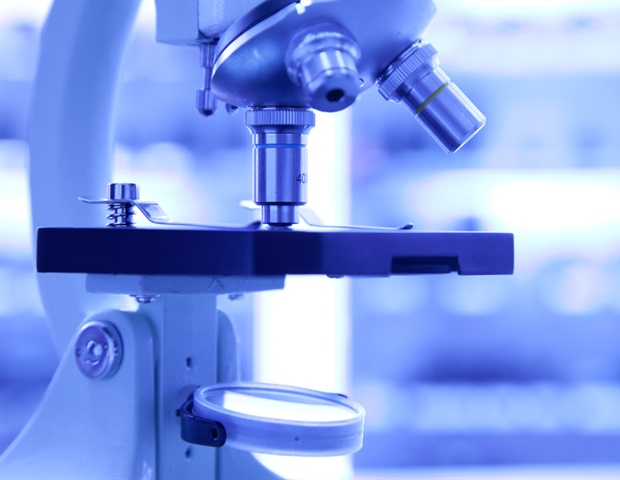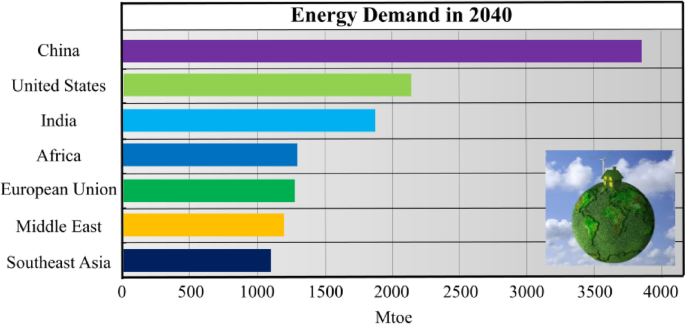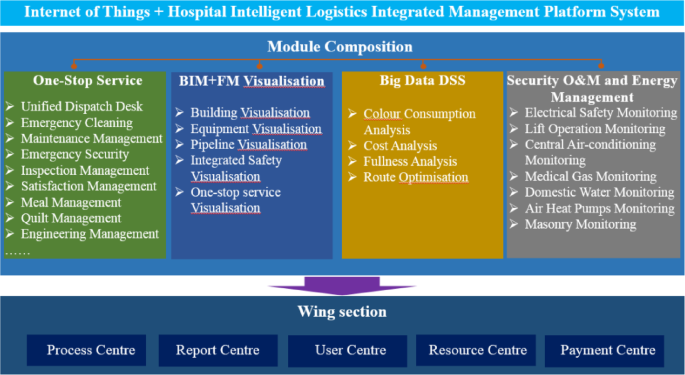Pakistan finmin seeks to deepen economic ties with US, China and Japan at IMF-World Bank meetings
KARACHI: Pakistani Finance Minister Muhammad Aurangzeb on Thursday held…

KARACHI: Pakistani Finance Minister Muhammad Aurangzeb on Thursday held…
This request seems a bit unusual, so we need to confirm that you’re human. Please press and hold the button until it turns completely green. Thank you for your cooperation!

…

Before cells can divide, they first need to replicate all of their chromosomes, so that each of the daughter cells can receive a full set of genetic material. Until now, scientists had believed that as division occurs, the genome…


Hugh SchofieldParis correspondent
 LIONEL BONAVENTURE/AFP
LIONEL BONAVENTURE/AFPA murder trial without a body which transfixed France has ended with 38-year-old…

UK scientists are celebrating landmark progress to using fusion as a clean energy source, after managing to “capture a star” in a specially built machine.
In…

The intelligent hospital logistics management system is comprised of five distinct platforms: an energy management platform, an intelligent lighting control platform, a one-stop service platform, a power operation and maintenance monitoring platform, and a visualization platform for the BIM O&M platform. The platform exhibits substantial expandability and forward-thinking characteristics, ensuring its adaptability to novel business models over time while concurrently reducing logistics input costs. The Internet of Things (IoT) and intelligent logistics management systems represent two pivotal areas of interest within the domain of healthcare. The integration of the Internet of Things (IoT) and High-Integrity Logistics Management (HILIMP) through the utilization of state-of-the-art information technology (IT) applications, including cloud computing, big data, and spatial geographic information, has the potential to transform the manner in which hospitals oversee their logistics operations. The sharing of information resources and the optimisation of their allocation can facilitate the streamlining of hospital operations, the improvement of efficiency, and the realisation of lean and efficient management. The integrated management platform for hospital intelligent logistics, which incorporates the Internet of Things, comprises a business module that encompasses a multitude of terminals, including web, mobile, handheld, and large-screen devices. The aforementioned terminals facilitate access to a diverse array of applications, which are currently constrained by their limited accessibility.
An intelligent logistics management system has been developed to enhance energy efficiency in hospitals through five core mechanisms. The first mechanism is territorial monitoring, which involves the deployment of multi-mode sensors in high energy-consuming equipment to collect real-time data. These sensors are designed to identify anomalies with an energy efficiency deviation greater than 20%. The first method is based on the dynamic energy consumption baseline, and it involves the realization of second-level interception (e.g., charging the pile at full power during non-working hours) through the LSTM anomaly detection model. The second method is prediction-driven dynamic tuning, which integrates outpatient volume and environmental data to predict regional load demand (e.g., The operating room air conditioning system is preheated to achieve on-demand regulation of HVAC and self-adaptation of logistics equipment. The pneumatic pipeline air pressure is dynamically adjusted according to the transport load. The third component is equipment health—energy-efficiency linkage. This is achieved through analysis of over 200 dimensional characteristics of early warning of energy-efficiency deterioration equipment, priority maintenance of high-energy-consumption failure points, and reduction of sudden energy consumption loss by 67%. The fourth component is process re-engineering—system synergy. Intelligent path planning has been demonstrated to reduce handling mileage by 22%. Batch removal of medical waste has been shown to reduce cold chain energy consumption by 19%. Furthermore, cross-system energy savings can be achieved through fresh air, air-conditioning residual cooling recovery, lighting, and logistics linkage. The fifth component is the digital twin, which is continuously optimized. The establishment of a three-dimensional baseline, encompassing the interrelationships among buildings, equipment, and temporal periods, is imperative. This baseline should be subject to automatic refinement, informed by historical data. A case in point is the adjustment of the air-conditioning set temperature by 0.5 °C in a given season, a strategy that is dynamically adapted through the analysis of past data. The technological closed loop (data collection → AI diagnosis → demand prediction → automatic execution → system synergy) has been demonstrated to reduce the ineffective energy consumption of equipment by 42%, the air conditioning power by 35%, and the overall energy consumption of the hospital by 25–32%. Furthermore, it has been shown to promote the transformation of energy management from experience-driven to AI-driven.
In order to circumvent the inherent limitations of the Internet + Hospital Intelligent Logistics Comprehensive Management Platform and give full play to its potential, the Internet + Hospital Intelligent Logistics Comprehensive Management Platform is constructed using the microservice architecture, as shown in Fig. 3. The characteristics of the hospital intelligent logistics platform with multi-terminal access (Web/mobile/handheld devices/large screen), multi-business modules (equipment monitoring/materials scheduling/energy management), and large fluctuations in the amount of access are addressed by this system, which adopts Spring Cloud microservices architecture (Spring Boot 3.0 + Nacos 2.2 Service Governance + Sentinel 1.8 Fusion Limit Flow). Achieving technical decoupling is contingent upon the following core value: The first component of interest is the medical-level high availability, which is characterized by the independent deployment of microservices and rolling upgrades. This ensures that the core business of power equipment monitoring and other 7 × 24 h of uninterrupted operation is supported. The K8s elastic scalability is also of note, as it can support emergency scheduling emergencies (> 500 QPS). The second component of interest is the non-functional depth of the adaptation. Redis caching through the Redis + library table is employed to ensure that the response time to the application of the hospital district is less than 200 milliseconds. The integration of Spring Security OAuth2 + State Secrets SM4 and GitLab CI/CD is achieved to facilitate a single-service upgrade with zero interruption. The architecture design primarily emphasizes non-functional requirements, encompassing performance, security, usability, ease of use, and maintainability. The overarching design concept constitutes the platform that provides support for the system. The overarching design concept underpinning the development of this system is the establishment of a unified platform capable of supporting all applications. The overarching design concept entails the establishment of a cohesive platform capable of supporting all applications. The architectural design features of this product are enumerated below:
The microservice architectural style is readily adaptable to accommodate growth and expansion. The partitioning of services into discrete units, or microservices, represents a means of reducing the overall size of a service while increasing its precision. This approach entails concentrating on a relatively autonomous domain with the objective of mitigating risk and facilitating the reuse of combinations. Furthermore, it enables the expansion of the service, which is frequently a constraint. In contrast to the necessity of simultaneous upgrades for all services, optimisation and expansion can be achieved in an incremental manner. The process of data slicing may be conducted by user organisations, data centres and service area clusters according to geographic location, with each entity having the capacity to perform this process independently.
Protocol adaptation represents a more flexible approach. The adaptation of communication protocols is achieved through the protocol adapter of the device management module, which is capable of supporting a variety of communication protocols, including MQTT, ModbusTCP, OPC UA, and BACnet, among others.
The provision of an open interface allows for seamless integration. The platform offers an open application programming interface (API) based on Hypertext Transfer Protocol (HTTP) or Hypertext Transfer Protocol Secure (HTTPS), which permits third-party applications to access the data.
The implementation of encryption ensures an elevated level of security. The application layer is secured through the utilisation of the HTTPS protocol in conjunction with digital certificates, thereby preventing any potential data tampering or denial of information interaction. The application layer’s sensitive data is encrypted through the utilisation of symmetric encryption algorithms, thereby ensuring the confidentiality and integrity of the data. The server-side interface processing serves to prevent both SQL injection attacks and cross-site XSS attacks.
Figure 4 illustrates the system function diagram. The IoT + Hospital Intelligent Logistics Comprehensive Management Platform’s product system represents a business architecture of N + 1 + 5, comprising N applications, one center, and five centers. The system can be described as an N + 1 + 5 business architecture, consisting of N applications, one center, and five centers. The N applications encompass four business sections: a one-stop service; safety, operations, and maintenance; energy consumption management; and BIM + FM visualization and big data DSS. The one-stop service section incorporates various business subsystems, including a unified scheduling desk, maintenance and repair reports, medical waste management, meal ordering systems, inspection management tools, warehouse management platforms, satisfaction surveys, and more. This section is made up of several business subsystems, including a unified dispatching desk, maintenance and repair, medical waste management, food ordering, inspection management, warehouse management, vehicle management, and satisfaction surveys. The Safety Operations and Maintenance and Energy Consumption Management section is responsible for monitoring safety operations, issuing alerts in the event of malfunctions, administering operations and maintenance, and compiling statistical analyses related to water, electricity, gas, and specialized equipment consumption in the context of hospital logistics.
One centre makes reference to the Internet of Things (IoT) + hospital intelligent logistics centre, which is capable of carrying out a multitude of applications. Such applications include unified user management, unified resource management, unified process management, unified payment management, unified report management, and open unified login and access interfaces. The open and unified login and access interface serves to dismantle information silos, integrate third-party applications, and provide a unified management portal. This has the effect of further improving the efficiency of management and business flow, while also facilitating a deeper exploration of the potential value of data to support logistics management decisions. The aforementioned five centres are the process centre, the report centre, the user centre, the resource centre, and the payment centre.
The Internet of Things (IoT) has become the cornerstone of the perception layer of the smart hospital logistics system, stemming from the rigid needs of medical scenarios. The necessity of full-domain perception is paramount in hospitals, where equipment status must be monitored in real time. The magnetic resonance imaging (MRI) temperature rise of ± 0.5 °C, the direction of energy flow (sub-metering), and the traditional supervisory control and data acquisition (SCADA) system’s support for point collection are limitations that the Internet of Things (IoT) distributed sensing network (temperature/vibration/current sensors) overcomes by meeting the needs of hospitals simultaneously. The IoT distributed sensing network can provide a building’s whole chain of dynamic sensing. The present study explores the phenomenon of real-time control dependency. The deployment of IoT actuators, such as smart valves and inverters, has been shown to be 60% more cost-effective than traditional PLC systems. These actuators facilitate wireless remote regulation, a feature that enhances their functionality and versatility. The following essay will explore the core benefits and synergistic value of big data technology.

The utilization of big data technology has become an inevitable choice due to the inherent characteristics of medical data, which can be defined by three key elements: volume, speed, and variety. The first element, volume, refers to the substantial quantity of data generated on a daily basis, which can exceed 50 gigabytes. The second element, speed, refers to the rapid rate at which updates to the second-level data are executed, typically within a span of less than one second. The third element, variety, refers to the diverse range of data types and formats that are present. The utilization of BIM (Building Information Modeling) models and video streaming in this context underscores the necessity of meticulous analysis for intelligent decision-making. Predictive maintenance, in particular, necessitates the integration of vibration spectra (time series data), maintenance records (text), and infrared images (unstructured). The utilization of infrared images (unstructured) necessitates the implementation of Hadoop + MLlib and other big data platforms to facilitate multimodal analysis. The process of energy consumption optimization entails the extraction of data spanning a decade, incorporating historical meteorological information and outpatient visit records. Conventional relational databases, such as Oracle, are susceptible to failure during petabyte-scale data processing operations. The integration of technological systems fosters the creation of exclusive value in the medical field. The Internet of Things (IoT) has been demonstrated to collect current harmonics and large volumes of data, thereby warning of bearing wear and reducing the need for excessive maintenance. The integration of IoT with big data has been shown to reduce operational and maintenance (O&M) costs and energy expenditure, thus establishing itself as the optimal solution for the digital transformation of medical logistics.
In the context of hospital logistics management systems, data security emerges as a paramount concern. The implementation of a robust data security framework entails the integration of three core components: storage encryption, local disaster recovery, and off-site disaster recovery. This triad of mechanisms constitutes the foundation of a comprehensive data security system.
The storage layer employs a hierarchical encryption strategy, utilizing AES-256 for database field encryption to defend against drag database attacks, BitLocker full disk encryption to prevent physical theft, eDrive protocol to block the loss of mobile media hardware-level encryption leakage, and a unified key management platform to ensure that even if the data is misdirected, it remains unreadable ciphertext.
The local disaster recovery system is predicated on the zero-trust principle, which is to say that it is based on continuous data protection (CDP) technology. This system generates anti-pollution snapshots at 15-minute intervals. Furthermore, it utilizes write-once-read-many (WORM) locks to operate logs, thereby preventing tampering. In addition, all transmission channels are encrypted by TLS 1.3 + SM4 to meet the relevant audit requirements.
Thirdly, off-site disaster recovery employs blockchain-verified replicas in at least 200 km geographically isolated nodes (RPO < 5 min) and facilitates 10-second fusion switching (RTO < 30 s). These mechanisms ensure the comprehensive and traceable management of first aid material dispatch records during extreme disasters. The system has passed the Equal Protection Level 3 certification (GB/T 22239 − 2019), thereby achieving military-grade protection for the entire life cycle of core data. The system has been designed to ensure that backup points are independently backed up, with multiple backups stored in different locations. This enhances the system’s disaster-tolerance capability and ensures the integrity of data.
The network security system is founded upon four fundamental principles.
It is of paramount importance to implement external network switches in order to guarantee the segregation of data flows between the local area network (LAN), intranet and Internet. This approach permits the segregation of data flows pertaining to internal and external networks, thereby enhancing the security of network-borne information.
The network system utilises high-performance and high-security firewalls, which provide comprehensive protection at both the network and application levels. It is of the utmost importance that the router is configured in a manner that enables comprehensive monitoring of all communications by the firewall. The monitoring and filtering capabilities of the firewall permit the authentication and authorisation of trusted users or information, thereby enabling them to log in to external servers or exchange information.
It is recommended that an external network switch be implemented to segregate the data flow between the internal and external networks. This approach permits the sharing of data traffic while maintaining the security of network information. Computers with internet access and data ports are connected to the external network switch in order to prevent the incursion of viruses into the internal network system and to safeguard the security of related data.
A system for monitoring and auditing network operations is selected for deployment on the external and internal networks of the system. This system is responsible for monitoring and recording all types of network activity. The system is capable of analysing a range of security events, external events (such as external intrusion) and internal events (such as file copying, information access, information release, resource change by internal personnel, and so forth) that occur within the network in real time. Subsequently, the system assesses the violations in accordance with the established criteria and documents them, along with any associated alarms and blocks.
The integration, expansion and interconnection of digital systems have historically constituted the primary challenges to the digital development of hospitals. The lack of compatibility between products from different vendors has further complicated the process of overall hospital informatisation. The IoT + Hospital Intelligent Logistics Comprehensive Management Platform offers comprehensive system integration specifications that encompass all aspects of hospital logistics, thereby providing a unified and standardised platform for data exchange and workflow collaboration. The system enables interaction between disparate business segments (e.g. maintenance and warehouse) and systems (e.g. equipment O&M and BIM visualisation) within the system. Furthermore, it enables the integration of data with external systems, including HRP, HIS, and other hospital systems.
The IoT + Hospital Intelligent Logistics Integrated Management Platform employs a layered decoupling architecture, a strategy that aims to address the systemic barriers impeding digital development in healthcare settings. The core of the system is comprised of four layers. The data layer is transmitted through the unified data exchange platform, thereby providing a standardized interface that supports JSON, XML, and HL7. This facilitates heterogeneous system data conversion, thereby breaking down the barriers to compatibility with external systems, such as HRP, HIS, and others. The service layer is responsible for the deployment of the workflow collaboration engine, which is integrated vertically through various business modules, including maintenance, warehousing, and other relevant systems. One notable feature is the automatic triggering of MRI failure by spare parts requisition, which exemplifies the system’s intelligent design. Additionally, the application layer integrates business modules such as BIM visualisation, equipment operation and maintenance, and energy consumption analysis, establishing a unified operation interface for logistics business. The interaction layer utilizes API gateway and message middleware, with Kafka ensuring latency below 200 milliseconds, to facilitate horizontal cross-system synergy, such as fire alarm linkage and video monitoring.
The IoT + Hospital Intelligent Logistics Comprehensive Management Platform has the potential to integrate a number of different hospital logistics business sections, including BIM visualisation, a one-stop service, equipment operation and maintenance, energy consumption statistics and analysis, video monitoring, fire and safety monitoring, and more. Such integration could facilitate the optimisation of hospital logistics operations, enabling the streamlining of processes and the real-time monitoring of key performance indicators. The creation of a unified logistics platform that incorporates all of the aforementioned logistics business sections has the potential to improve logistics efficiency and facilitate the development of an information management model.